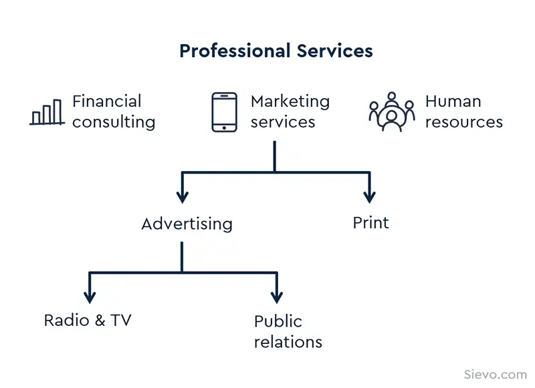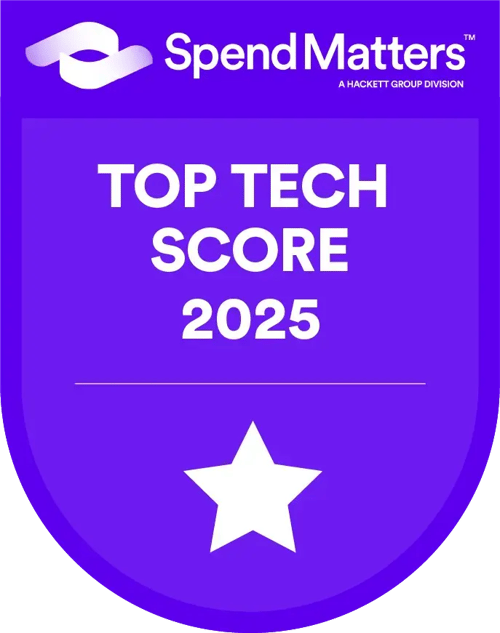Spend categorization does not have to be painful. Granted, it can be time-consuming and demanding, but the time spent on developing a robust category structure will pay off handsomely.
Extracting usable information from historical company spend data sounds easy in principle but in practice, it can be challenging. Without a firm foundation, the information you generate from the raw data may be incomplete, error-ridden, and unreliable. However, with the right taxonomy, classification is straightforward and spend is categorized in ways that naturally lead to useful analysis.
What is spend categorization?
Spend categorization is the act of assigning spend into purchasing categories. A robust and easy to understand category taxonomy is a pre-requirement for satisfactory spend categorization end result.
In spend categorization we harmonize your purchasing data and spend to the selected taxonomy, enabling procurement with visibility to global spending to make better sourcing decisions.
Before spend analysis: the data cleansing and enrichment process

What is a spend taxonomy?
This hierarchy of spend categories is also called a spend taxonomy or a category tree - which is an essential part of the science or technique of spend categorization. Here is a simple example of a taxonomy for professional services category:

When selecting a spend taxonomy, we start with a spend categorization structure that’s customized to your business. Spend is classified based on a hierarchy of categories, from general to specific, and typically extends down by 3-4 levels of granular detail.
Though it’s possible to extend the hierarchy beyond 4 levels, we find that the last levels are often either repetitive or an unfeasible level of granularity in terms of the categorization effort required. The most specific level of a taxonomy should group together products that are similar enough to give you real insight without getting too into the weeds. A good rule of thumb is that the last level of the spend taxonomy should be able to be sourced with a single RFP.
Why is spend taxonomy so important?
The main objective is to provide a baseline for identifying strategic sourcing initiatives. Attention to taxonomy design is very important because it helps to classify your data accurately so that you can see what you’re spending on, how much, to whom, and what the scope for cost savings is.
Making informed decisions based on your spend is only possible when the data is complete, cleansed, and allocated into meaningful buckets. These buckets must be relevant and meaningful in your industry sector and your organization.
The categories selected must be accepted and commonly understood by every level of management across all business units. If the categorization is too complicated it will create confusion; if it’s too simple, opportunities will be missed. Everyone needs to be talking the same language.
10 Tips for designing your spend taxonomy
- Align your categories with business needs including internal reporting requirements
- Create a hierarchy with enough sub-categories within a category to be useful. If the spend data is grouped at too high a level, there may be savings opportunities missed. Too many levels may mean that sub-categories with small amounts of spend become timewasters.
- The taxonomy or category tree should be structured from a supply market perspective to consolidate spend from suppliers of similar goods and services. Take advice from subject matter experts to ensure that your categorizations make sense and that they are complete, valid, and accurate.
- Category taxonomy should explain what goods or services were purchased. A common mistake is creating a taxonomy focused on who purchased the goods or services, what the source was, or which accounting process the purchases belong to. Rather than categorizing spend data based on these factors, they can be included as additional data points used for analysis.
- Categories and sub-categories must be unique and not overlapping in other parts of the taxonomy. Each sub-category must be mutually exclusive, e.g. if Auditing is a sub-category in Financial Services, it must not also appear as Auditing under Accounting. Otherwise, auditing spend could be divided in two different places, decreasing the amount of visibility into the total spend and making analysis more complicated.
- Categories and sub-categories should also be collectively exhaustive, meaning all types of spend must have a place in the taxonomy. This way, no area of spend is neglected or grouped into a place it doesn’t belong and you can rest assured that you have an accurate and complete picture of procurement.
- Categories must be clearly defined, agreed upon, documented, and communicated. Thought must be given to the coding norms – numbers, naming conventions, and length of descriptions at each level.
- Consider expanding growing categories with additional sub-categories e.g. mobile technology and hand-held devices within I.T. hardware. It should be periodically reviewed, where new subcategories should be added.
- Avoid having a category named “other” or “miscellaneous”. All spend belongs somewhere.
- Tailoring a taxonomy to the data that you currently have will allow you to hit the ground running with categorization and analysis. If you find you would need to gather a large amount of data to make more granular classifications, consider whether the end goal would justify the additional effort.
Using an existing taxonomy vs a customized one
Developing your customized category hierarchy can be laborious, but is time well spent. A tailor-made taxonomy gives you the best insight into your specific and unique purchasing categories. This is especially true for direct categories where spend tends to be very different across different companies, less so for indirect spend which has much more commonalities across companies.
At Sievo, we recommend a taxonomy solution that’s developed to fit a company’s needs, and reflects what the company is purchasing in the scope of procurement. While there is no need to reinvent the wheel, some companies are bicycles and others are snowplows. Each company has its own needs and focuses even when their spend might superficially look like others. For this reason, best practices in taxonomy might vary from business to business.
If you would not have any taxonomy available, you can take a look at generic taxonomies used in various industries as source for inspiration:
United Nations Standard Products and Services Code (UNSPSC)
Standard Industrial Classification (SIC)
North American Industrial Classification System (NAICS)
European NACE (Nomenclature of Economic Activities)
But none of these are entirely satisfactory for procurement use cases. Companies also have their general ledger chart of accounts (GL), used by finance but usually not the best fit for procurement’s needs.
Final tips for a better taxonomy
- Align your category hierarchy to your supply market
- Use internal and external specialist knowledge and expertise to help with defining category groups
- Define category groups that will help focus analysis
- Utilize a software solution with flexible taxonomy capabilities that lets you use the tailor-made structure you want.
- Take advantage of software to help granularly classify your data.
Contributors: Thank you Jane Venanzi (Taxonomy Architect) for your contribution!




